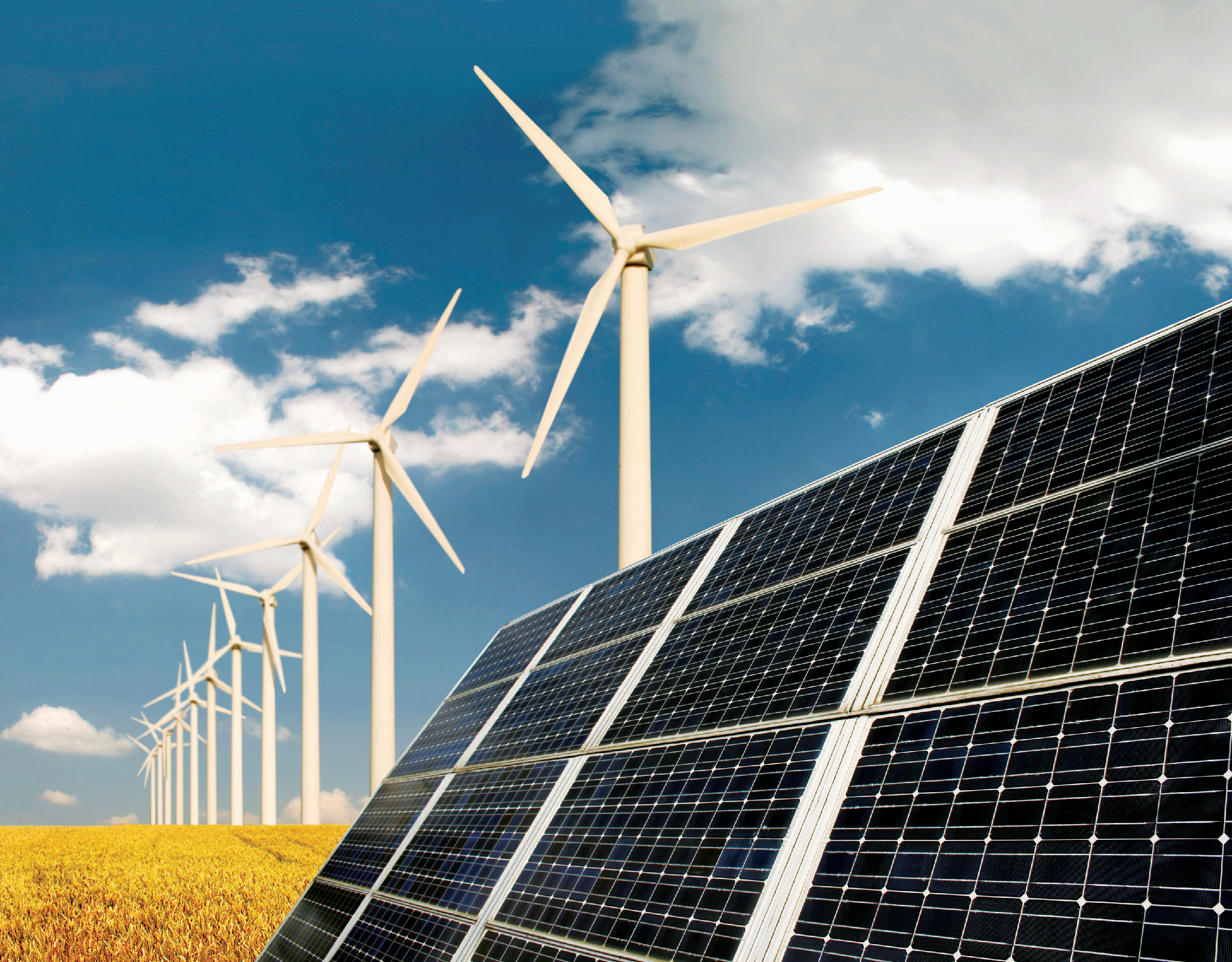 As Asia ramps up its investment in renewable energy, there appears to be no shortage in liquidity to fund these projects. Banks continue to lend their balance sheet as they remain the main funding avenue for project sponsors. The multilaterals such as the Asian Development Bank (ADB) and the International Finance Corporation (IFC), a member of the World Bank Group, are also investing and mobilizing financing to support private sector participation in the energy sector across the region. With more renewable energy projects coming on stream, this represents a significant opportunity for green finance to be part of the investment and financing activities.
As Asia ramps up its investment in renewable energy, there appears to be no shortage in liquidity to fund these projects. Banks continue to lend their balance sheet as they remain the main funding avenue for project sponsors. The multilaterals such as the Asian Development Bank (ADB) and the International Finance Corporation (IFC), a member of the World Bank Group, are also investing and mobilizing financing to support private sector participation in the energy sector across the region. With more renewable energy projects coming on stream, this represents a significant opportunity for green finance to be part of the investment and financing activities.Indeed, investments in renewable energy in Asia has accelerated during the past 24 months as the region reduces its energy mix that still is biased towards fossil fuels. Coal-fired generation power plants remain the staple source of energy in several countries in this part of the world as they are cheaper and thus easier to bring to the market.
China and India are at the forefront of the renewable energy drive in Asia. China is the largest renewable energy market in the world. At the end of 2016, renewable energy accounted for about 35% of the national installed capacity, according to a Moody’s Investors Service report. India offers enormous prospects as it targets 40% cumulative installed power capacity to come from non-fossil sources by 2030 – from the current 30% – to meet its emission reduction commitments under the Paris agreement signed in December 2015.
In China, the growth in the country’s renewable energy sector will continue to be underpinned by the targets set under its 13th Five-Year Plan, as well as its commitment to the Paris agreement. The installed capacity from key renewable energy sources is forecast to reach at least 660 gigawatt (GW) in 2020. The government has launched numerous regulatory directives to support the sector.
China’s national targets for capacity expansion and favourable policies will continue to encourage the development of renewable energy and are consistent with the country’s commitment to reducing carbon emissions, says Moody’s. “We expect the favourable operating environment will remain the key driver of growth in the renewable sector over the next five years,” it adds.
The National Energy Administration announced in March 2016 the Renewable Energy Portfolio Standards (RPS), setting a target for non-hydro renewables to account for 9% of total electricity consumption by 2020. According to Moody’s, individual consumption targets are likewise set for each of the 31 provinces at levels ranging from 5% to 13%.
Meanwhile, Chinese state-owned enterprises are broadening their renewable energy portfolio through overseas acquisitions. In June 2016, China Three Gorges Corporation bolstered its international green energy footprint by acquiring from Blackstone Energy Partners and its affiliated private equity funds the majority interest in wind farm operator WindMW of Germany for US$1.8 billion.
It quickly followed this deal in October with another significant acquisition involving the Brazilian hydro assets of Duke Energy of the US for US$1.2 billion. This year in August, China Three Gorges made another overseas foray, this time in Peru, when it acquired the Chaglla hydroelectric plant for an enterprise value of US$1.39 billion. The plant has an installed capacity of 456MW and accounts for about 10% of Peru’s installed hydroelectric capacity and about 4% of the country’s total power generation.
Greening energy mix
Also on prowl for overseas renewable assets is State Grid Corporation of China, which in September last year bought a Brazilian power company CPFL Energia from Camargo for an enterprise value of US$13.3 billion.
Also on prowl for overseas renewable assets is State Grid Corporation of China, which in September last year bought a Brazilian power company CPFL Energia from Camargo for an enterprise value of US$13.3 billion.
In India, the renewable energy sector is likely to witness strong growth in the coming years as it focuses on greening its energy mix in line with its commitments under the Paris agreement. It plans to significantly increase its renewable energy capacity to 175GW by 2022 from 57GW at present.
But amid the bright prospects, there are challenges confronting the sector, another Moody’s report on India points out. For instance, the policy framework for renewables continues to evolve which presents a risk for renewable projects. For one thing, adherence to renewable purchase obligations (RPOs) has been limited, leading to lower demand for renewable energy. Nevertheless, the feed-in-tariff and competitive bidding guidelines for wind and solar projects are well-established in India, thus improving revenue visibility over the life of the power purchase agreements (PPAs).
A large increase in renewable energy capacity would bring execution challenges, including land acquisition, establishing resource quality, grid connectivity and availability. Moody’s notes that low tariffs for recent solar auctions have cut the margin of error on cost assumptions, project delays, equity quality, payment delays and curtailment. The sharp decline in panel prices, though, partly mitigates these risks.
Another key challenge is the weak credit quality of the offtakers. Moody’s argues the state-owned distribution companies, the major offtakers for most renewable projects, typically have weak financial profiles, which is a challenge for developers. While there is no history of defaults under PPAs, payment delays are quite common.
In terms of financing, foreign currency funding is constrained by limited hedging products. It is estimated that India needs to invest close to US$150 billion to meet its 2022 renewable energy targets. With domestic banks constrained in their lending to renewable projects, foreign capital will play an important role in the future. A key hindrance is the limited hedging products available to fully cover the currency risk from PPAs being denominated in Indian rupee.
Meanwhile, multilaterals are playing an active role in funding renewable projects either through debt or equity. In July this year, ADB was one of the three cornerstone investors in the initial public offering of B.Grimm Power of Thailand.
The Thai independent power producer raised over 10.4 billion baht (US$312 million) after selling 651.8 million ordinary shares at 16 baht each, with the ADB subscribing for 123 million shares valued at 1.97 billion baht. In addition, the bank will also administer a loan of up to US$20 million from the Canadian Climate Fund under the clean energy financing partnership facility of the ADB.
Also in July this year, IFC invested 6.67 billion rupee (US$101.50 million) in L&T Infrastructure Finance Company by subscribing to the first official green bonds in India. This is in line with IFC’s strategy to support renewable energy infrastructure in the country and also to develop the capital markets.
IFC funding for renewables
L&T Infrastructure will use the money to give loans to solar power projects. The company has been increasing its focus on renewable energy, which has come to comprise 37% of its total portfolio of 227.74 billion rupee. IFC’s contribution to India’s renewable energy sector accounts for 15% of the incremental capacity since 2010. It invests in financial institutions that fund climate change projects as well as directly in projects and companies.
L&T Infrastructure will use the money to give loans to solar power projects. The company has been increasing its focus on renewable energy, which has come to comprise 37% of its total portfolio of 227.74 billion rupee. IFC’s contribution to India’s renewable energy sector accounts for 15% of the incremental capacity since 2010. It invests in financial institutions that fund climate change projects as well as directly in projects and companies.
In another major undertaking, IFC provided US$66 million and mobilized a further US$172 million in a landmark transaction to help build the largest wind farm in Pakistan to address the severe power shortages and boost the development of renewable energy in the country.
The financing to Triconboston Consulting Corporation will help construct and operate three new 50MW wind farms in Sindh province. The projects are part of IFC’s broader efforts to foster private participation in the Pakistan power sector to increase investments, help diversify energy sources, cut the cost of electricity and reduce the use of polluting and expensive fossil fuels. The development of wind farm contributes to the diversification of Pakistan’s energy generation mix by increasing capacity with shorter lead times and also helping to reduce the cost of electricity.
The increasing priority in renewable energy is providing a broader scope for green financing for environment-friendly projects. This in turn is bringing increased diversity into the green bond market.
In Malaysia, for instance, solar energy company Tadau Energy issued in July this year a 250-million ringgit (US$59 million) sustainable responsible investment (SRI) sukuk, representing the first green sukuk launched in Malaysia.
Tadau Energy is a project company undertaking a large scale solar project of 50MW in Kudat, Sabah under two 21-year PPAs entered into with Sabah Electricity in December 2016. Proceeds from the issuance will be allocated to finance the project.
In India, the Indian Renewable Energy Development Agency Limited (IREDA) priced on September 28 this year a 19.5-billion rupee (US$300 million) green Masala bond to finance and refinance renewable energy and energy efficiency projects. The five-year deal attracted total demand in excess of 34 billion rupees from 49 accounts with 66% of the bonds distributed in Asia and 34% in Europe. Fund managers and insurance companies accounted for 62% of the paper, banks 30% and private banks 8%.
IREDA is a public limited government company established as a non-banking financial institution in 1987 engaged in promoting, developing and extending financial assistance for setting up projects relating to new and renewable sources of energy and energy efficiency/conservation.





.jpg)
.jpg)


